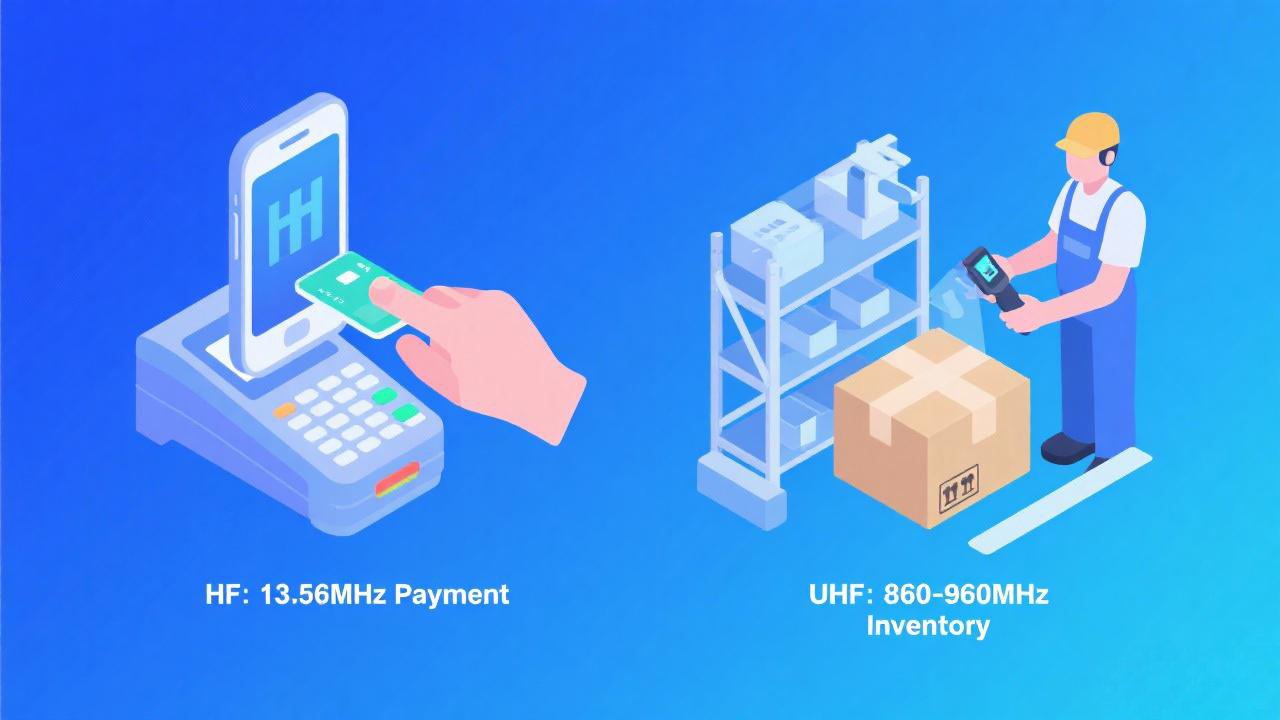
Understanding the different RFID frequencies and their optimal applications
Introduction
Radio Frequency Identification (RFID) technology has revolutionized how we track and identify objects across various industries. However, choosing the right frequency for your specific project can be challenging. This guide will help you understand the differences between Ultra-High Frequency (UHF), High Frequency (HF), and Low Frequency (LF) RFID systems and how to select the most suitable one for your application.
RFID Frequency Spectrum Overview
| Frequency Band | Frequency Range | Read Range | Data Transfer Speed |
|---|---|---|---|
| Low Frequency (LF) | 125-134 kHz | Short (0-10 cm) | Slow |
| High Frequency (HF) | 13.56 MHz | Medium (0-1 m) | Moderate |
| Ultra-High Frequency (UHF) | 860-960 MHz | Long (1-15 m) | Fast |
Low Frequency (LF) RFID: 125-134 kHz
LF RFID commonly used in access control systems and animal tracking
Key Characteristics:
- Read Range: Short (up to 10 cm)
- Interference Resistance: Excellent – works well near metals and liquids
- Cost: Low to moderate
- Data Transfer: Slow speed
- Standards: ISO 14223, ISO 18000-2
Typical Applications:
- Access control systems
- Animal identification and tracking
- Vehicle immobilizers
- Key card entry systems
High Frequency (HF) RFID: 13.56 MHz
HF RFID used in contactless payments and smart cards
Key Characteristics:
- Read Range: Medium (up to 1 meter)
- Interference Resistance: Good, but affected by metals
- Cost: Moderate
- Data Transfer: Moderate speed
- Standards: ISO 15693, ISO 14443 (NFC)
Typical Applications:
- Contactless payment systems
- Smart cards and tickets
- Library book tracking
- NFC applications
- Identity documents
Ultra-High Frequency (UHF) RFID: 860-960 MHz
UHF RFID ideal for inventory management and supply chain tracking
Key Characteristics:
- Read Range: Long (1-15 meters)
- Interference Resistance: Sensitive to metals and liquids
- Cost: Moderate to high (but tags are inexpensive)
- Data Transfer: High speed
- Standards: EPC Gen2, ISO 18000-6C
Typical Applications:
- Inventory management
- Supply chain tracking
- Retail stock management
- Logistics and warehousing
- Asset tracking
Comparative Analysis
Read Range Comparison
Visual comparison of read distances across different RFID frequencies
Interference Resistance
LF RFID shows excellent performance in challenging environments with metals and liquids, while UHF is most affected by such conditions. HF offers a balance between range and interference resistance.
Cost Considerations
- LF: Lower implementation cost, ideal for simple applications
- HF: Moderate cost, suitable for secure applications
- UHF: Higher initial setup cost but lower per-tag cost for large deployments
Choosing the Right Frequency for Your Project
Select LF RFID if:
- You need short-range reading
- Working near metals or liquids
- Require robust performance in harsh environments
- Applications include access control or animal tracking
Choose HF RFID if:
- You need medium read range
- Require secure data transmission
- Applications involve payment systems or smart cards
- NFC compatibility is important
Opt for UHF RFID if:
- You need long read range
- Require multiple tag reading simultaneously
- Applications involve inventory or supply chain management
- Cost-per-tag is critical for large deployments
Conclusion
Selecting the right RFID frequency depends on your specific requirements for read range, environment, security needs, and budget. LF offers robustness in challenging conditions, HF provides security for data-sensitive applications, while UHF delivers long-range performance for large-scale deployments. By understanding these characteristics, you can make an informed decision that ensures optimal performance for your RFID project.
Remember to consider future scalability and compatibility with existing systems when making your selection. Each frequency has its strengths, and the right choice will ultimately depend on your specific use case and operational requirements.
